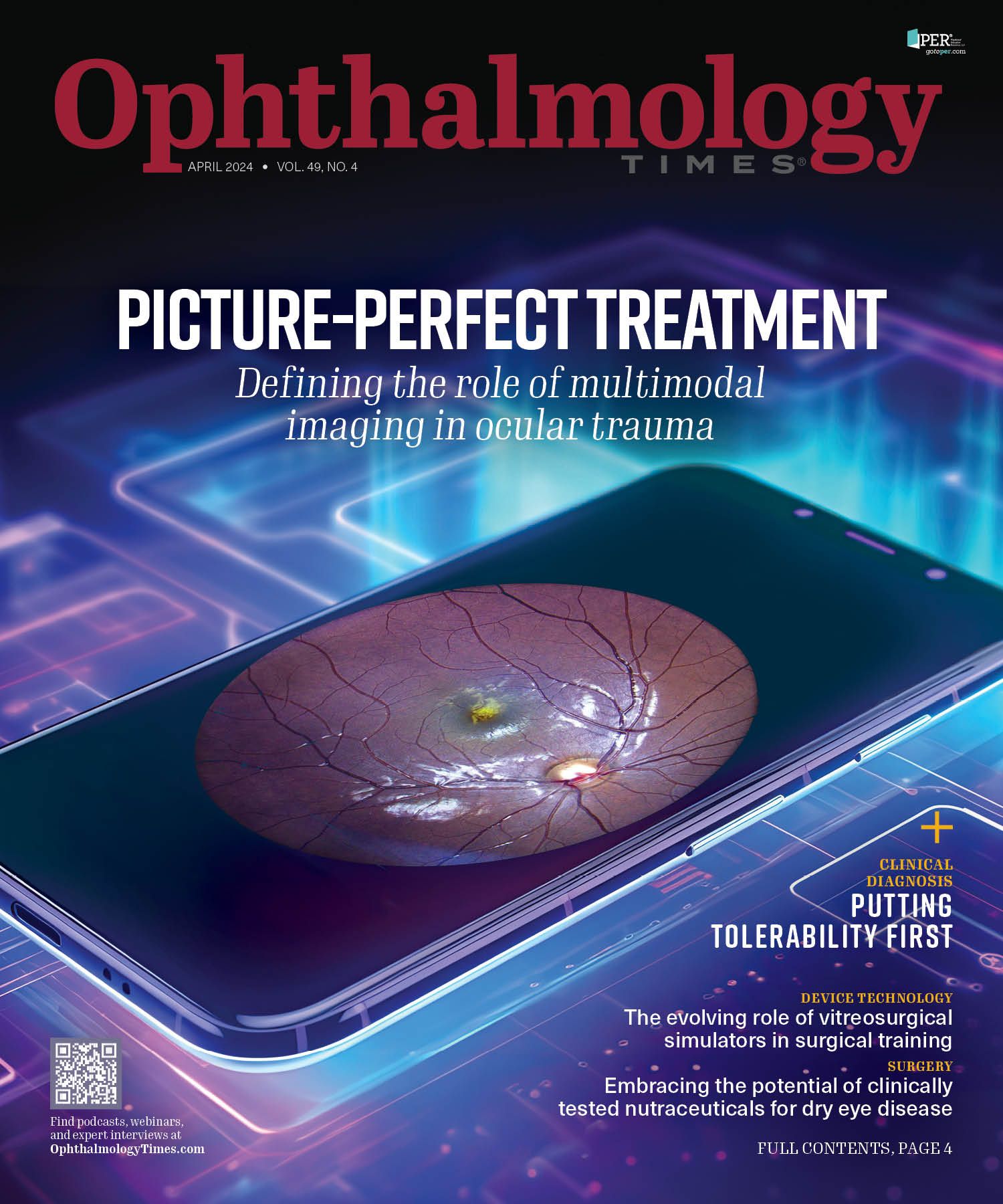Publication
Article
Digital Edition
Deep learning model for AI: Stopping nascent GA in its tracks
Author(s):
Researchers found the model demonstrated “near-perfect” detection capabilities.
(Image Credit: AdobeStock/immimagery)

Reviewed by Heming Yao, PhD, and Zhichao Wu, PhD
A recent study conducted by US and Australian researchers found that a deep learning model for an artificial intelligence (AI)–assisted approach for detecting nascent geographic atrophy (GA) has the future potential to both have “near-perfect” detection abilities and ease the diagnostic burden carried by practices,1 according to co–first authors Heming Yao, PhD, from Genentech, Inc, San Francisco, California, and Zhichao Wu, PhD, BAppSc(Optom), from the Centre for Eye Research Australia, Royal Victorian Eye and Ear Hospital, East Melbourne, Australia.
Having the ability to detect GA before it has a chance to take hold was among the goals of this study. The authors wanted to develop a model to screen images for specific features indicative of nascent GA on optical coherence tomography (OCT) scans.
On OCT images, the specific features of photoreceptor loss referred to as nascent GA2-5 have shown promise as one such biomarker for providing a strong predictor of GA onset.5,6 The features to look for included subsidence of the inner nuclear layer and outer plexiform layer and/or a hyporeflective wedge-shaped band within the Henle fiber layer. A recent study5 reported that in individuals with bilateral large drusen, eyes that developed nascent GA showed a 78-fold increased risk of developing GA compared with those that did not have nascent GA.
The AI-assisted model developed would whittle down the number of images that warrant manual review, the investigators explained.
Study design
The study included 1884 OCT volume scans with 49 B-scans per volume from 280 eyes of 140 patients who did not have neovascular age-related macular degeneration but had bilateral large drusen at baseline. The eyes had been evaluated every 6 months for up to 36 months. Forty of these eyes developed nascent GA. The OCT volume and B-scans were labeled to indicate that they identified nascent GA, the so-called ground truth scans for training the model. The investigators evaluated the performance of the model for detecting nascent GA across all visits or at the visit of the onset of nascent GA onset, they explained.
The main outcome measures were the sensitivity for detecting nascent GA and the proportion of OCT B-scans requiring manual review.
Model’s performance
“The AI-assisted approach using outputs from the deep learning model to guide manual review had sensitivities of 0.97 (95% CI, 0.93-1.00) and 0.95 (95% CI, 0.87-1.00) for detecting nascent GA across all visits and at the visit of nascent GA onset, respectively, when requiring manual review of only 2.7% and 1.9% of selected OCT B-scans, respectively,” the investigators wrote.
“This study demonstrated that a deep learning model developed for an AI-assisted approach for detecting the onset of nascent GA could help to dramatically reduce the number of OCT B-scans requiring manual review by over 50-fold while maintaining near-perfect sensitivity,” Yao and her colleagues concluded. “This approach has the potential to substantially reduce the current manual burden of reviewing OCT B-scans in both clinical trials and practice for detecting nascent GA.”
References:
Yao H, Wu Z, Gao SS, et al. Deep learning approaches for detecting of nascent geographic atrophy in age-related macular degeneration. Ophthalmol Sci. 2024;4(3):100428. doi:10.1016/j.xops.2023.100428
Wu Z, Luu CD, Ayton LN, et al. Optical coherence tomography-defined changes preceding the development of drusen-associated atrophy in age-related macular degeneration. Ophthalmology. 2014;121(12):2415-2422. doi:10.1016/j.ophtha.2014.06.034
Wu Z, Luu CD, Ayton LN, et al. Fundus autofluorescence characteristics of nascent geographic atrophy in age-related macular degeneration. Invest Ophthalmol Vis Sci. 2015;56(3):1546-1552. doi:10.1167/iovs.14-16211
Wu Z, Ayton LN, Luu CD, Guymer RH. Microperimetry of nascent geographic atrophy in age-related macular degeneration. Invest Ophthalmol Vis Sci. 2014;56(1):115-121. doi:10.1167/iovs.14-15614
Wu Z, Luu CD, Hodgson LA, et al. Prospective longitudinal evaluation of nascent geographic atrophy in age-related macular degeneration. Ophthalmol Retina. 2020;4(6):568-575. doi:10.1016/j.oret.2019.12.011
Ferrara D, Silver RE, Louzada RN, Novais EA, Collins GK, Seddon JM. Optical coherence tomography features preceding the onset of advanced age-related macular degeneration. Invest Ophthalmol Vis Sci. 2017;58(9):3519-3529. doi:10.1167/iovs.17-21696

Newsletter
Don’t miss out—get Ophthalmology Times updates on the latest clinical advancements and expert interviews, straight to your inbox.







